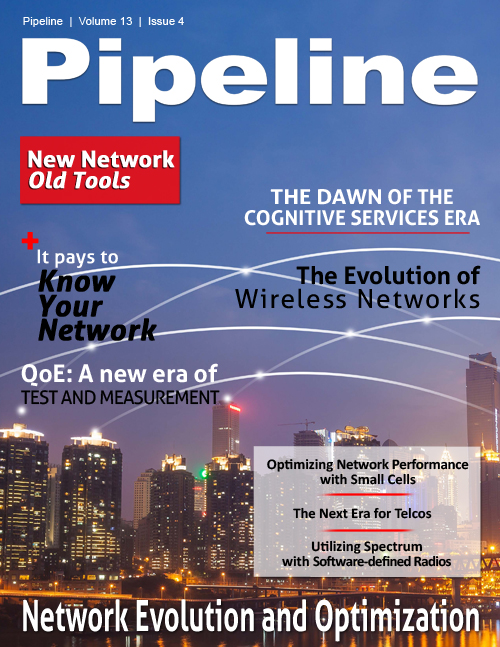The Next Era for Telcos: Zero Latency Computing, Fog Computing, NFVi and Automation
By: Nitin Serro

Transformation is nothing new to the telecommunications industry. In fact, it’s pretty much a given. The breakup of the Bell system more than two decades ago encouraged competition amongst service providers, all striving to provide additional value in a commodity space. Technology later created a new competitive dimension. Wireless communications, mobility, and the advent of smart phones and tablets that began with the introduction of the first iPhone in 2007, all triggered a drastic change within the industry. Today is no different, with major cloud providers honing in on telcos’ market share by providing services that compete directly with their core businesses. Businesses and consumers clamor for faster and faster connectivity, and a slew of advanced technologies like IoT, virtual reality and robotics, are all placing increased demands on the existing telecommunications infrastructures and services. The question is now on how to deliver more services, better and faster.
Consider Deloitte’s report, “2016 Telecommunications Industry Outlook,” which noted that carriers have to provide high-quality, reliable and affordable data and voice services in a market where there is increasing usage, declining rates, and scarce spectrum.
Usage alone is astronomical. According to Deloitte’s latest Global Mobile Consumer Survey (GMCS), U.S. consumers look at their mobile devices over 8 billion times a day in the aggregate. IoT is also having a big impact and will continue to do so as more consumers acquire and engage with a variety of smart, connected systems like home control and monitoring solutions, fitness bands and smart watches, and car-based connected systems. All of these are adding new layers of service, which telcos will have to support and even manage.
In the article, Deloitte & Touche’s Craig Wigginton, vice-chairman and U.S. Telecommunications leader, highlights how businesses in different industries are creating strategic partnerships with service providers to increase their speed for time-to-market for various solutions such as connected cars or smart cities. As an example, he suggests carriers team up with key players in, for example, the retail, automotive or healthcare industries as a way to expand business. Wigginton says that cross-sector mergers and acquisitions (M&A) among telcos and verticals such as media or technology companies could generate resolutions to complex business scenarios. He adds that by leveraging each other’s natural strengths, the partners can reduce or even avoid having to invest time and significant resources to develop capabilities themselves. Specifically, integration with key players in these industries is a way for carriers to expand their business, and do so in a way that is timely and less risky.
A critical challenge lies in the telcos’ own communications environments. Their legacy infrastructures, current cloud implementations and existing bandwidth have serious limitations that cannot be solved with standard equipment upgrade cycles, more bandwidth, or even the addition of software-defined networking (SDN) technologies against legacy infrastructures.
Instead, telcos should embrace the concepts of fog computing, leverage Network Functions Virtualization (NFV), and design architectures with automated services orchestration so they have the flexibility to move application resources—whether network, compute or storage—to wherever they are needed between the end user and the cloud. This flexibility and robustness paves the way for the concept of providing Zero Latency Computing (ZLC) to end users, where it makes contextual sense.
Similar to the way fog lies close to the Earth's surface, fog computing is a resource (network, computing or storage) delivered near the point of consumption. More specifically, it is a concept that allows those resources to be most logically and efficiently positioned anywhere on the continuum from the data source to the cloud. NFV defines the standards for compute, storage, and networking resources on which virtual networks are built. Virtualized Network Functions (VNF) is then controlled by software-defined networking (SDN) and management and orchestration (MANO) tools.
Taking fog computing a step further, Zero Latency Computing is a concept where little or no time is lost during the exchange of information between one interface and another, or when a system is able to respond instantly to an input of information. It’s essential for applications such as medical robots where “lag” or latency could delay the work between a surgeon and a patient in a geographically remote operating table. ZLC also could serve as a foundation for a new generation of services and applications like IoT, virtual reality and other next-gen applications where real time interactions are required. Automated services orchestration is, of course, the automated arrangement and management of computer resources, and typically involves aligning business objectives and requests with applications, data and infrastructure through workflows, provisioning and change management.




















